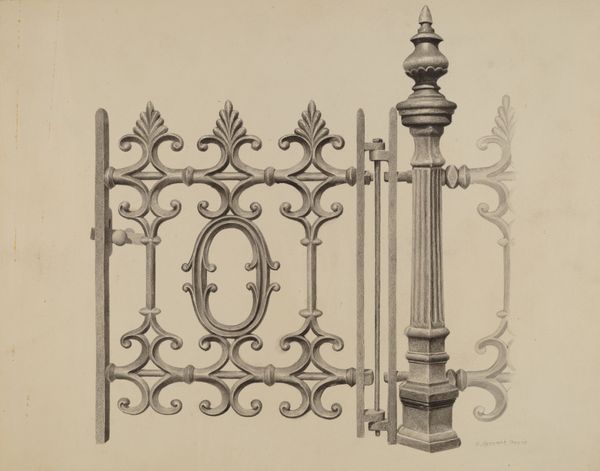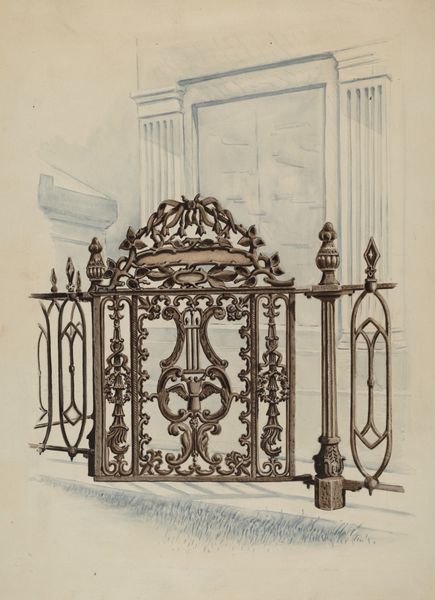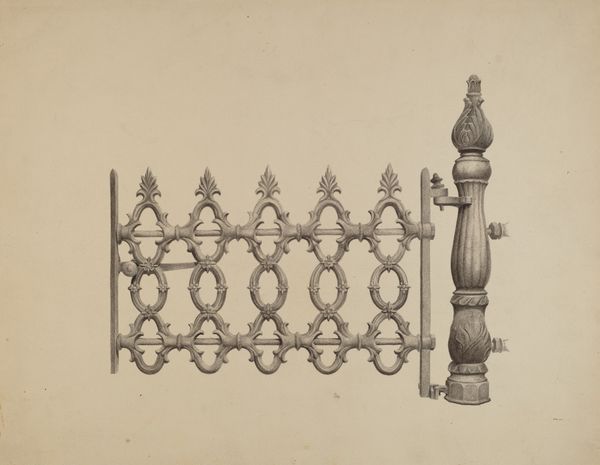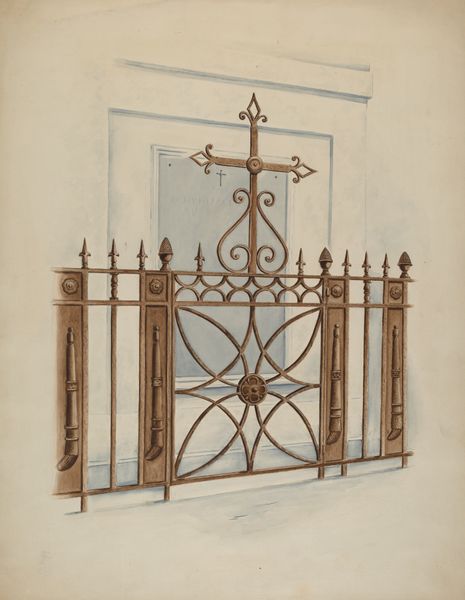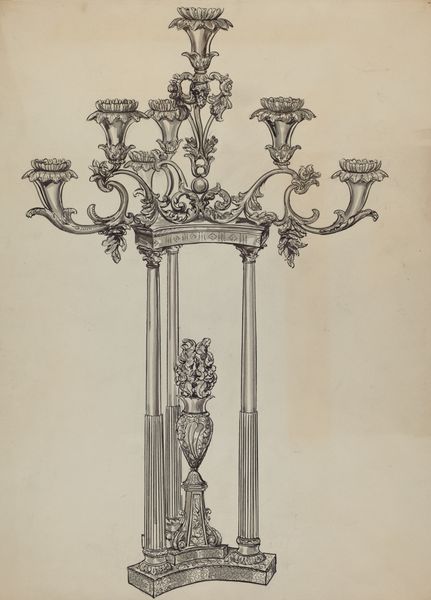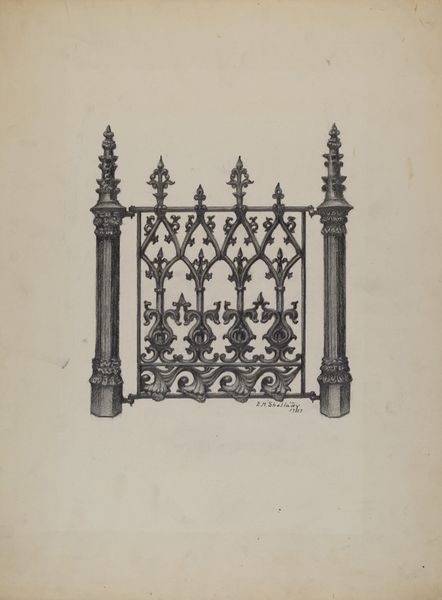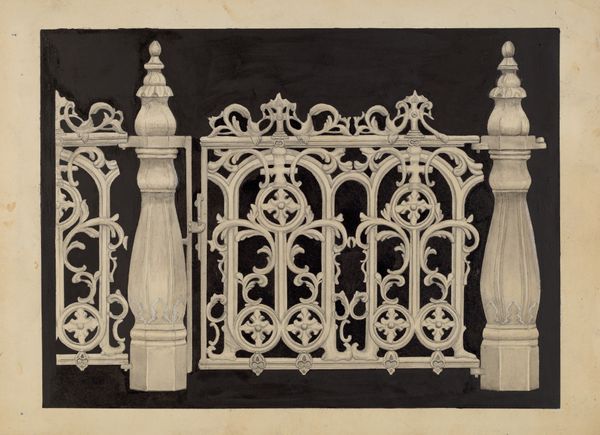
drawing, pencil, charcoal, architecture
#
drawing
#
charcoal drawing
#
geometric
#
pencil
#
charcoal
#
architecture
#
realism
Dimensions: overall: 28.9 x 36.7 cm (11 3/8 x 14 7/16 in.)
Copyright: National Gallery of Art: CC0 1.0
Jerome Hoxie made this drawing of a gate and gatepost in the late nineteenth or early twentieth century, with what looks like graphite on paper. The limited palette of grays and beiges, and the delicate hatching create a study of light and shadow as well as a detailed record of form. Look at the way Hoxie used the graphite to describe the ornate details of the ironwork. The tonal variations are so subtle. It's like he's feeling his way around the object, mapping its surfaces with his pencil. There’s an emphasis on line and contour, and the way that the shadows define the shapes, like the cast shadow on the beige surface behind the gate. It reminds me that artmaking is about process, about spending time observing and responding to the world around us. This piece reminds me a little of some of the architectural studies of Charles Sheeler. But whereas Sheeler’s work tends towards stark realism, Hoxie’s piece has a softer, more romantic quality. Ultimately art is an ongoing conversation across time, isn't it? It's all open to interpretation.
Comments
No comments
Be the first to comment and join the conversation on the ultimate creative platform.
